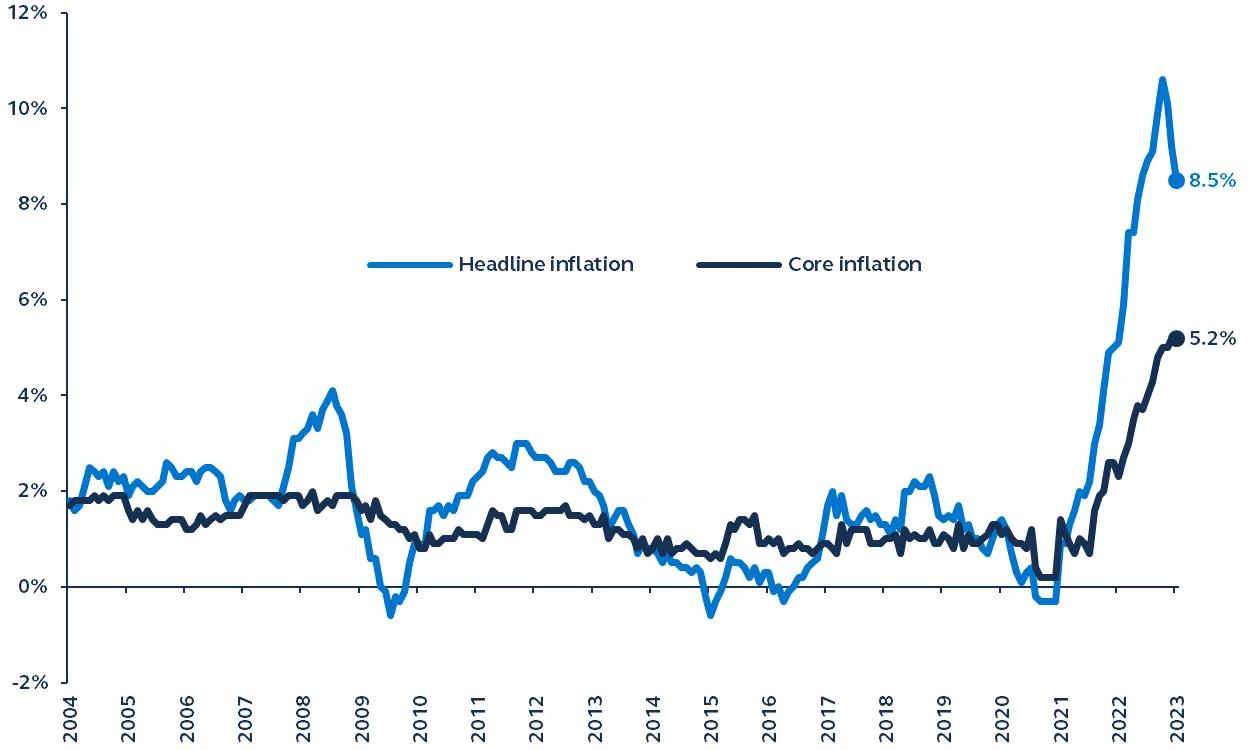Today, the European Central Bank (ECB) again raised its three key policy rates by 50 basis points (bps), but also surprised markets by stating its intention to raise another 50 bps in March—effectively announcing a 1% hike across two meetings. The interest rate on the main refinancing operations, the marginal lending facility, and the deposit facility will be increased to 3.00%, 3.25% and 2.50% respectively. With 300 bps of rate hikes since last July, and the stated intention of another 50 bps hike in March, the ECB’s goal remains one of dampening demand and guarding against the risk of a persistent upward shift in inflation expectations.
The ECB’s latest projections from December indicated that inflation will still be above the ECB’s 2% target at the end of their forecast period, implying that further rate hikes were clearly required. Today, the ECB reiterated its December principles for balance sheet normalization (known as Quantitative Tightening, or QT). From March 2023, the asset purchase programme (APP) portfolio will decline by an average of €15bn per month until the end of June. Decisions about further declines will be determined thereafter. There were no announced changes to the bank’s other lending programs.
The ECB did also emphasize its intention to tilt corporate bond purchases more strongly towards issuers with a better climate performance, and that it is supportive of “the gradual decarbonization of the Eurosystem’s corporate bond holdings, in line with the goals of the (2015) Paris Agreement.”




